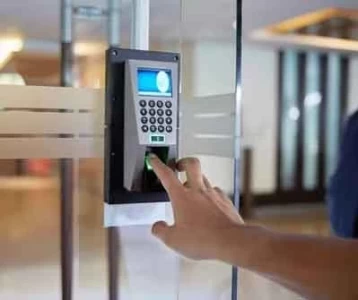Life Safety & Security Systems: The Interoperability Challenge

Building automation holds the promise of enhanced security and streamlined operations through centralized management and intelligent coordination across various systems. However, many buildings face a significant hurdle: legacy security infrastructure. Often, essential systems like access control, video surveillance, and fire alarms were designed and deployed in isolation. This lack of initial integration creates barriers to achieving the unified view and automated responses possible within a fully integrated building automation system (BAS). This article analyzes the interoperability challenge, offers strategies to address it, and stresses the importance of prioritizing open standards and interoperability when choosing security solution vendors.
The Roots of the Interoperability Problem
The difficulty in integrating building security systems stems largely from their historically fragmented nature. Many legacy systems were designed using proprietary communication protocols specific to a single vendor. This makes it difficult, if not impossible, for these systems to exchange information with other solutions or the central BAS platform. Even in cases where basic communication can be established, subsystems might produce data in incompatible formats, hindering the ability of the BAS to make sense of the information and utilize it effectively. This isolation is further compounded by the fact that security systems were often deployed as standalone solutions, without the necessary design considerations for future integration within a larger building automation framework. Consequently, reliance on these proprietary technologies can lead to vendor lock-in, where building owners face limited options if they want to expand or upgrade their security setup, often incurring significant additional costs for a full system replacement.
Consequences of Fragmented Security
The lack of interoperability has tangible consequences that impact security effectiveness. Security personnel may need to manually monitor multiple disparate systems, potentially delaying the identification of issues and slowing response times. Fragmented systems limit visibility – an access control alert, for example, becomes far more actionable when it can be automatically correlated with relevant video footage and data from other building sensors. The potential for automation, such as triggering lockdowns or evacuations based on multi-system threat indicators, becomes much harder when systems operate independently. Overall, managing a multitude of separate security interfaces adds complexity, increasing both the workload of security teams and the potential for human error.
Strategies for Overcoming the Challenge
To overcome these challenges, a combination of strategies is often necessary. Prioritizing new security solutions that utilize open standards (such as BACnet, ONVIF, etc.) is essential, as it increases flexibility and minimizes future compatibility hurdles. For existing legacy systems, specialized gateways capable of translating between proprietary protocols and open standards may provide a bridge. Middleware solutions can add a software layer on top of disparate systems, facilitating data exchange and centralized monitoring even when underlying systems lack direct compatibility. While it may not always be immediately feasible, developing a long-term strategy should include planned migration away from inflexible legacy systems towards modern solutions designed with integration in mind.
Vendor Selection: Prioritizing Interoperability
Vendor selection plays a critical role. When choosing new security systems or upgrading existing ones, interoperability must be front and center. Look for vendors who demonstrate a commitment to using open protocols and data exchange standards. Availability of Application Programming Interfaces (APIs), which allow custom interaction with a security solution, can be a valuable indicator of integration potential. Understanding a vendor's integration track record – their success in integrating their solutions with other security systems and BAS platforms – provides insights into their approach. Finally, inquiring about the vendor's future roadmap gives a sense of their commitment to maintaining compatibility with evolving standards and their willingness to collaborate with other providers within the security ecosystem.
The Benefits of Unified Security
While it requires effort, overcoming the interoperability challenge yields substantial benefits for a BAS-integrated security approach. A unified view of data from various security systems enhances situational awareness and empowers faster detection of evolving threats. Centralized dashboards and management tools streamline operations, reducing complexity for security personnel. True automation becomes possible, with rule-based systems triggering actions that span multiple systems, from basic notifications to complex emergency protocols. Finally, centralized reporting and analytics provide valuable data to support continuous improvement in security procedures and inform future investment decisions.
The interoperability challenge is a significant but solvable hurdle on the path to achieving a modern, BAS-integrated security platform. Through a combination of prioritizing open standards, employing integration tools strategically, planned system upgrades over time, and carefully selecting vendors who value interoperability, building owners and managers can overcome the limitations of fragmented infrastructure. The outcome – a unified security platform that enables faster threat detection, efficient responses, and proactive security enhancements – leads to a safer and more secure built environment for all occupants.






